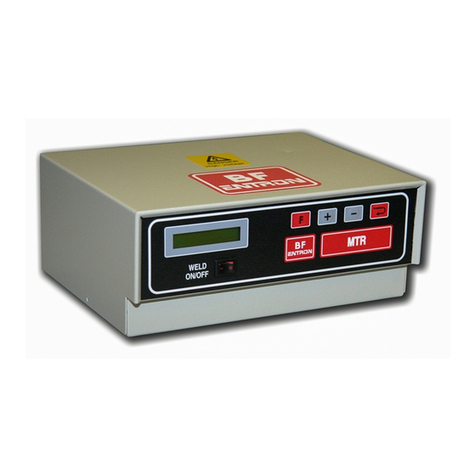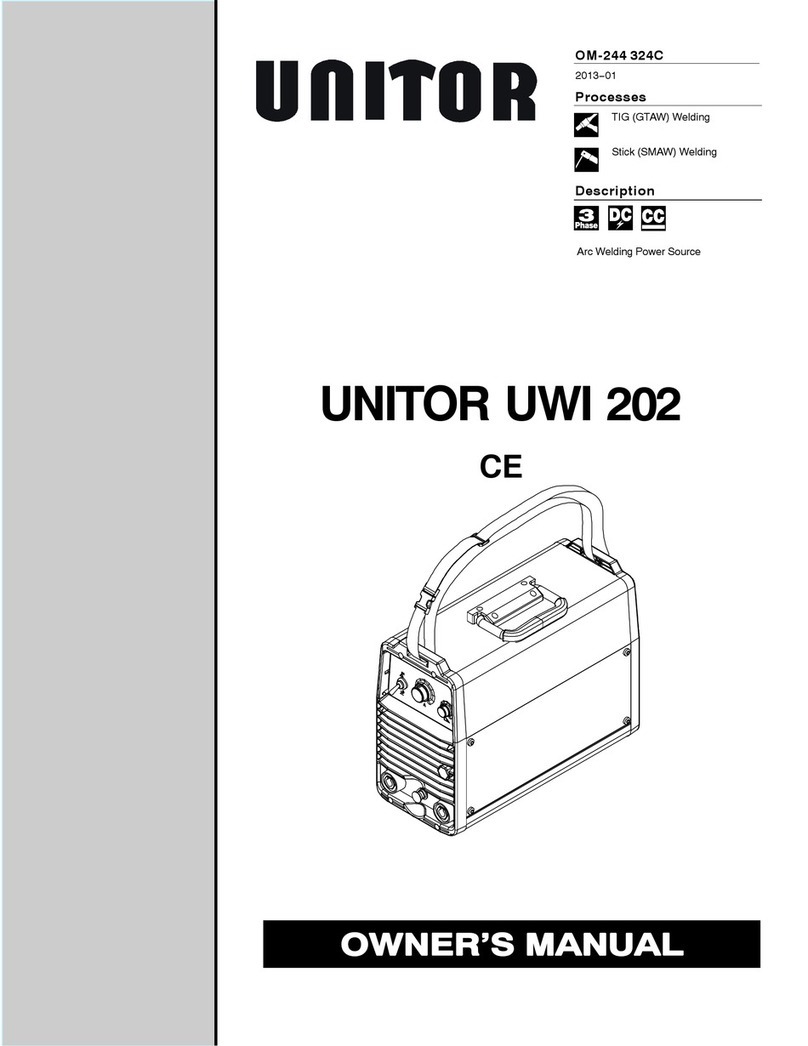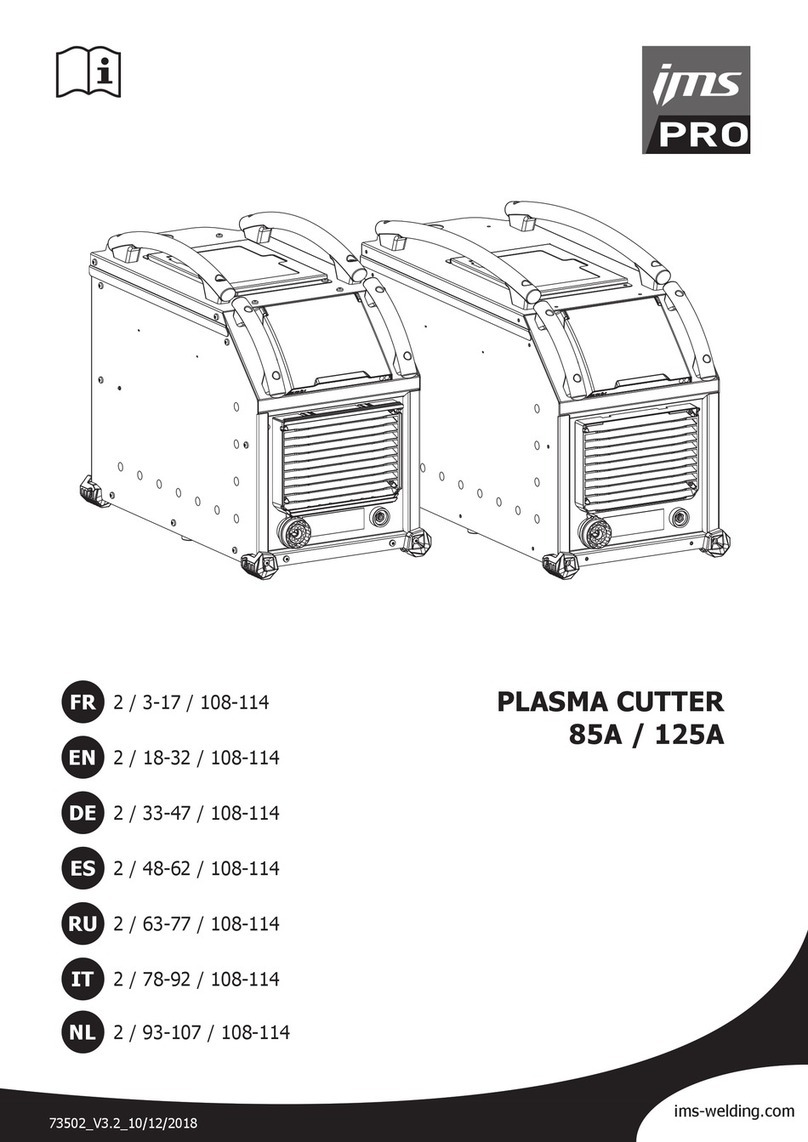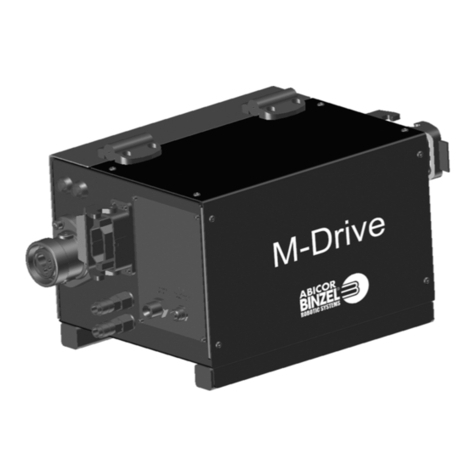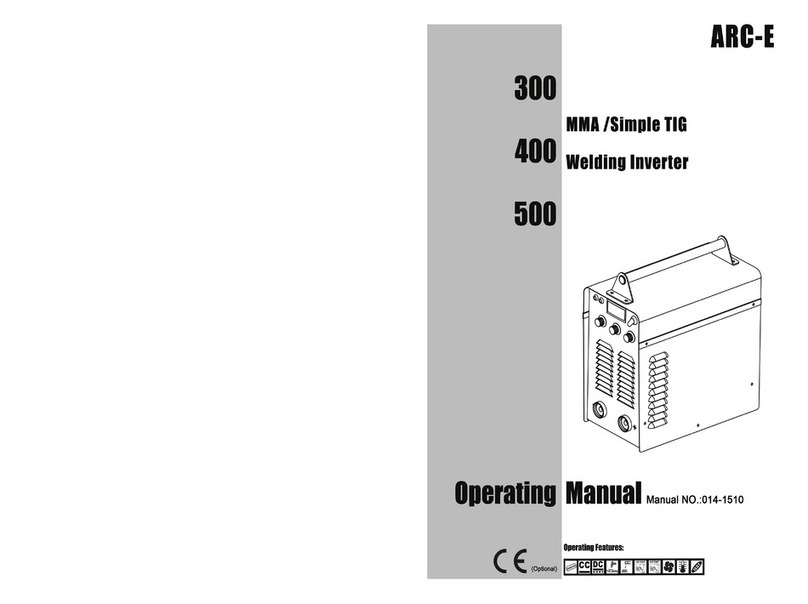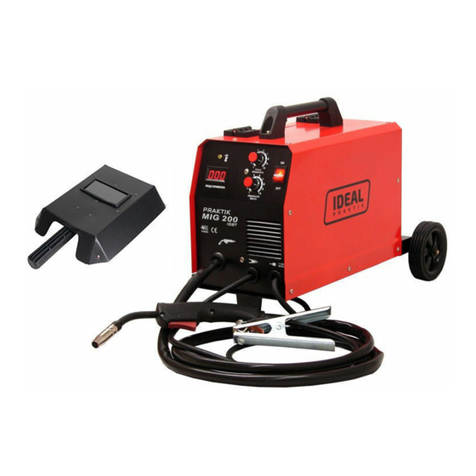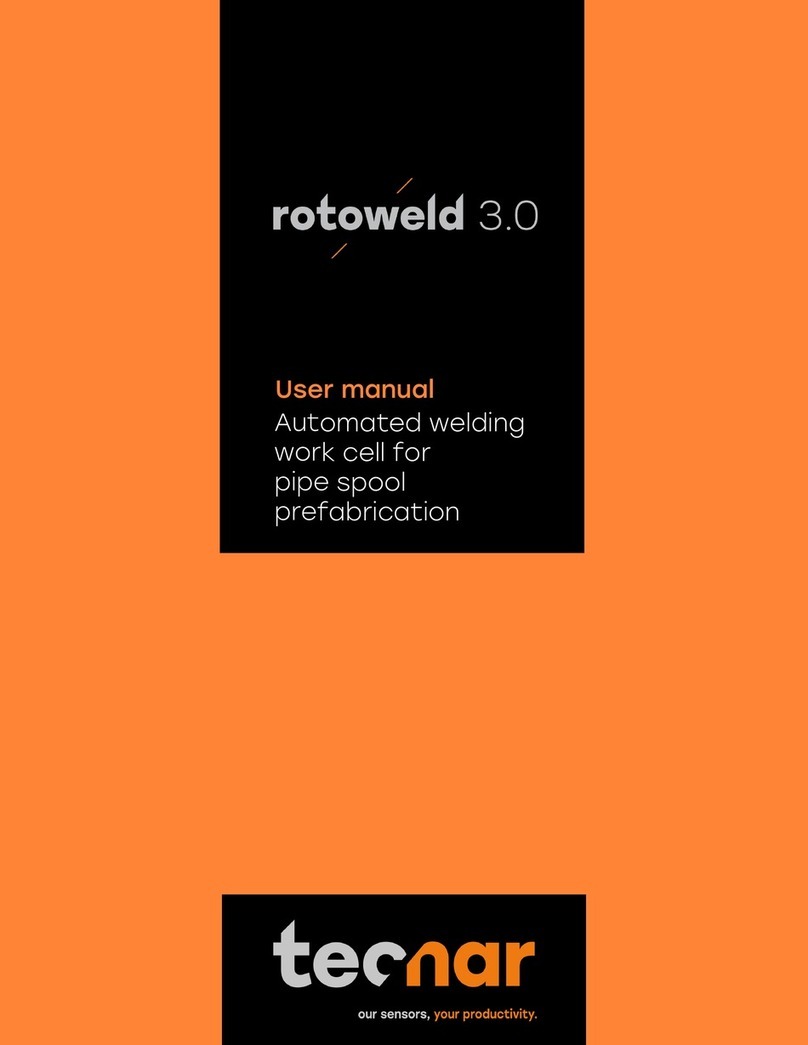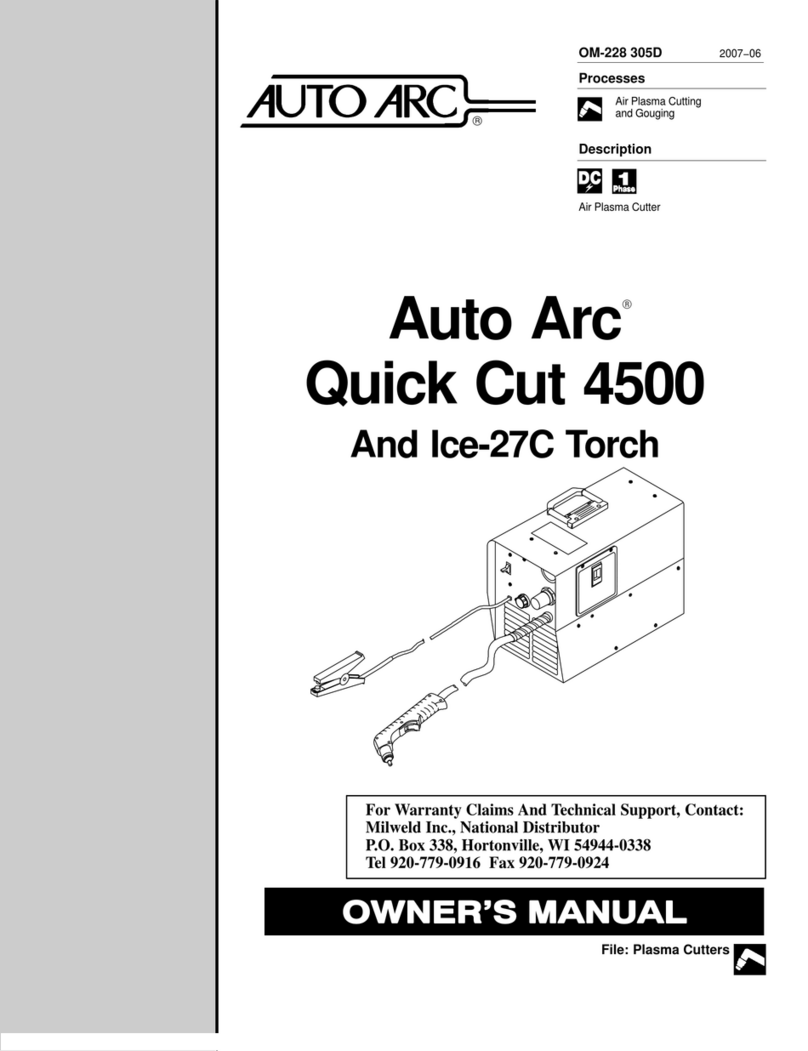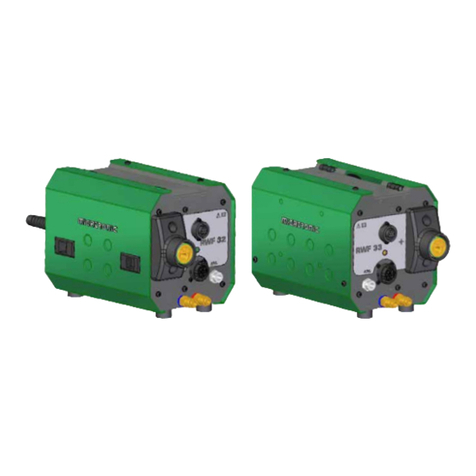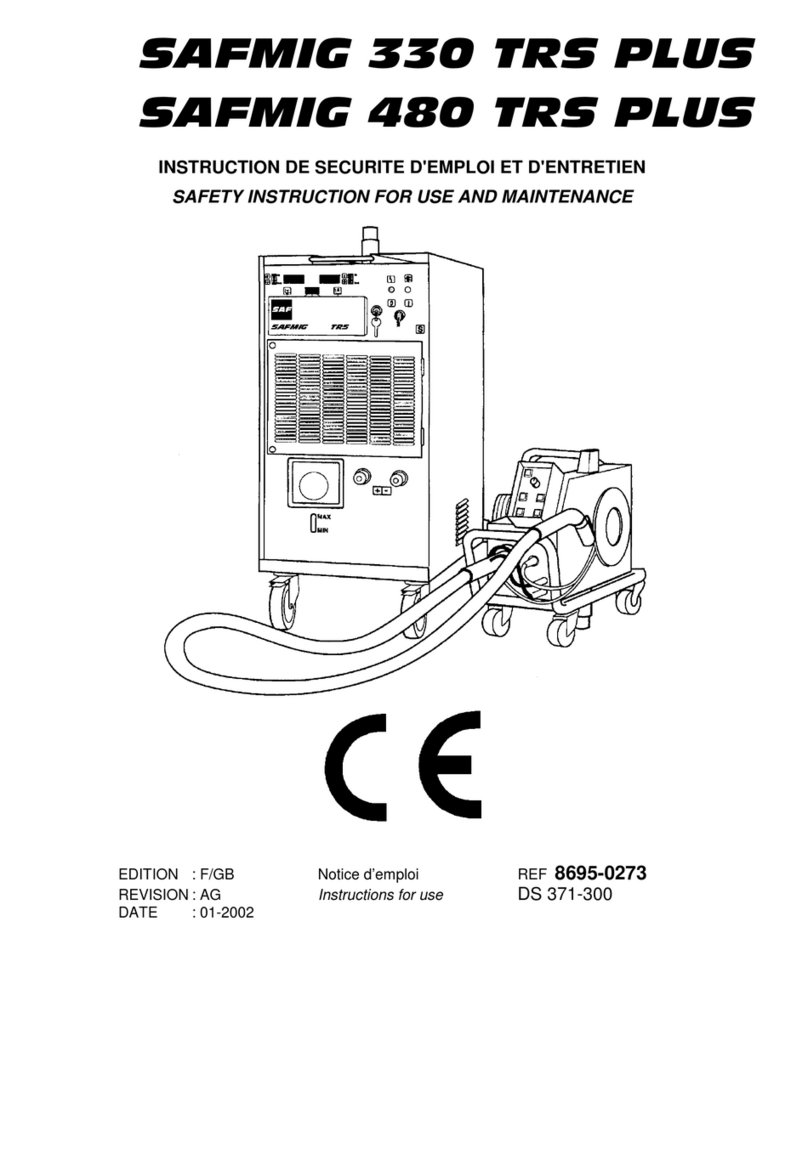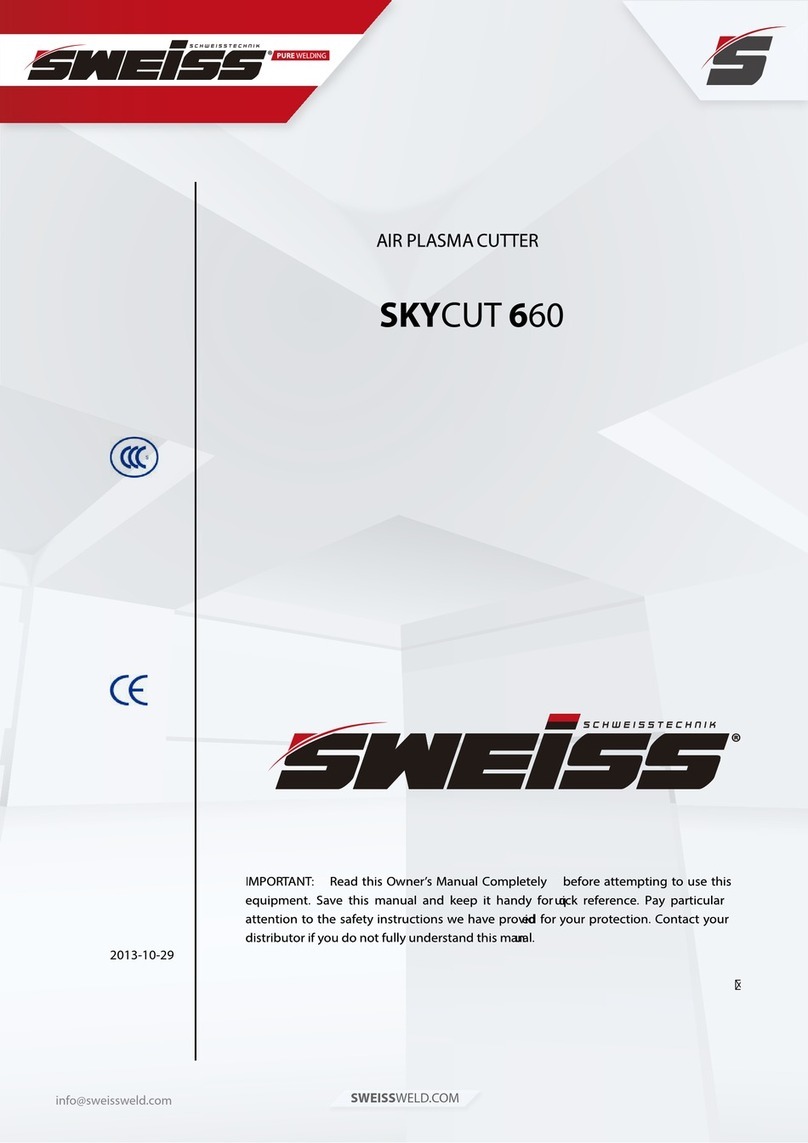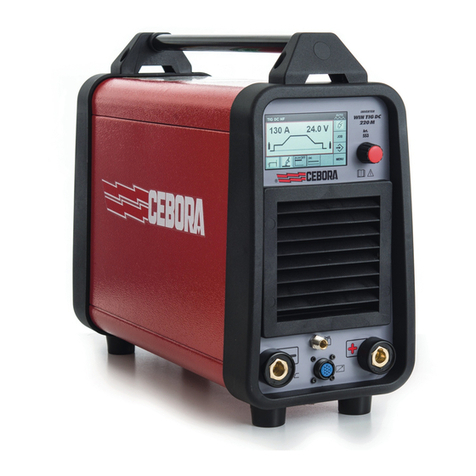Siro Lasertec SL10 User manual

Tool / Machine / System
Model Designation:
Welding Laser System
Type:
SL 10
Year of Manufacture:
Serial Number:
2022
__________________
Customer Registration:
Company Name:
Order No.:
Location:
Maunfacturer’s Contact Details:
Company Name:
Siro Lasertec
Laserservice und Vertrieb GmbH
Street:
Rastatter Straße 6
Town:
D-75179 Pforzheim
Telephone:
+49 (0) 7231 154130
Telefax:
+49 (0) 7231 1541329
E-Mail:
info@siro-lasertec.de
Homepage:
www.siro-lasertec.de
Technical Customer Service
support@siro-lasertec.de
Instruction Manual:
Version:
END
Creation Date:
28.03.2023
Instruction manual
Laser Welder

Index
IM Machine Name Rev.: END I
Index
1 Foreword ........................................................................ 4
1.1 Introduction .......................................................................................... 4
1.2 Copyright and Property Rights ........................................................... 4
1.3 Information for the Operating Company ............................................ 4
2 Safety .............................................................................. 5
2.1 Information about Signs and Symbols ............................................... 5
2.2 Intended Purpose ................................................................................. 6
2.3 Reasonably Foreseeable Misuse ........................................................ 6
2.4 Residual Risks ...................................................................................... 7
2.5 Description of the Safety Devices ...................................................... 8
Position of the Emergency Stop Devices .......................................................... 8
Protection of the Eyes against Laser Radiation ................................................ 9
Protection of the Skin against Laser Radiation ................................................. 9
Welding Fumes ............................................................................................... 10
2.6 Labels and Signs on the Welding Laser System ............................. 11
2.7 Operating Personnel / User Groups ................................................. 11
2.8 Safety Instructions for the Operating Personnel ............................ 12
2.9 Safety Instructions for the Maintenance Personnel ........................ 13
Preparation for the Maintenance Work ........................................................... 13
Carrying Out the Maintenance Work ............................................................... 13
2.10 Information about Special Types of Hazard .................................... 13
Electrical .......................................................................................................... 13
Raw Material, Solvents, Oils, Greases and other Chemical Substances ........ 16
Noise ............................................................................................................... 17
3 Product Description .................................................... 18
3.1 Function .............................................................................................. 18
3.2 Construction of the Welding laser system ....................................... 19
3.3 The Work Chamber ............................................................................ 20
3.4 Electrical ............................................................................................. 20
3.5 Shielding Gas ..................................................................................... 21

Index
IM Machine Name Rev.: END II
3.6 Cooling Water ..................................................................................... 21
3.7 Technical Data .................................................................................... 21
4 Transport and Installation .......................................... 22
4.1 Transport ............................................................................................. 22
4.2 Installation .......................................................................................... 23
Safety Devices ................................................................................................ 23
5 Operation ...................................................................... 24
5.1 Safe Operation .................................................................................... 24
Instructions for the Operating Company ......................................................... 25
Electro-technical Instructions .......................................................................... 25
5.2 Operating Controls ............................................................................. 26
User Interface .................................................................................................. 26
Operating Side ................................................................................................ 27
Emergency Stop Button and Key Switch ........................................................ 28
Foot Switch ..................................................................................................... 29
Cross-hair Rotary Control ............................................................................... 29
5.3 Commissioning, Switching On and Off ............................................ 30
Commissioning ................................................................................................ 30
Shielding Gas Connection ............................................................................... 32
Switching On ................................................................................................... 32
Switching Off ................................................................................................... 33
5.4 Operation ............................................................................................ 33
Cross-hair Adjustment ..................................................................................... 34
5.5 Faults ................................................................................................... 35
6 Maintenance ................................................................. 36
6.1 Care / Cleaning ................................................................................... 37
6.2 Maintenance ........................................................................................ 38
General Maintenance Instructions .................................................................. 38
Preparation of the Repair and Maintenance Work .......................................... 38
Checking of the Safety Devices ...................................................................... 38
Safe Maintenance of the Electrical Devices .................................................... 39
6.3 Maintenance Plan ............................................................................... 40
Maintenance of Outsourced Components ....................................................... 41
Water Changes ............................................................................................... 41

Index
IM Machine Name Rev.: END III
Filter Fleece Changes ..................................................................................... 41
6.4 Repairs ................................................................................................ 42
Changing the Safety Glass of the Focusing Lens ........................................... 43
Clean the protective glass of the focusing lens ............................................... 43
Laser Lamp Changes ...................................................................................... 44
7 Disposal ....................................................................... 51
7.1 Environmental Protection .................................................................. 51
7.2 Oil and Oil-containing Waste, Lubricating Greases ........................ 51
7.3 Plastics ................................................................................................ 51
7.4 Metals .................................................................................................. 51
7.5 Electrical and Electronic Scrap ......................................................... 52
7.6 Scrap ................................................................................................... 52
8 Annexes ....................................................................... 53
8.1 Declaration of Conformity ................................................................. 54
8.2 General Assembly Drawing ............................................................... 55
8.3 Parts List with Spare Part Recommendations / Identification ....... 56
8.4 Protocols and Measurement Results ............................................... 57
8.5 Circuit Diagram + Parts List .............................................................. 58
8.6 Software .............................................................................................. 59
8.7 Component Supplier Documentation ............................................... 60

Foreword
IM Machine Name Rev.: END 4
1 Foreword
1.1 Introduction
This instruction manual contains important information for the safe, proper and
economic operation of the welding laser system. Its observance prevents hazards,
reduces repair costs and downtime and increases the reliability and service life of the
welding laser system.
The instruction manual must always be available and be read and applied by every
person who carries out work on or with the welding laser system.
To this belong, amongst other things
– the operating and elimination of faults during operation,
– the maintenance (care, servicing and repair),
– the transportation.
1.2 Copyright and Property Rights
● Make this instruction manual accessible only to authorized personnel.
This instruction manual is protected by copyright law.
The disclosure or duplication of documents, also in the form of extracts, as well as the
exploitation and communication of its contents are not permitted insofar as not
expressly permitted by us in writing.
Infringements shall be punishable and shall commit the offender to pay damages. All
rights for the exercising of industrial property rights are reserved by Siro Lasertec.
1.3 Information for the Operating Company
This instruction manual is an essential component of the welding laser system.
● Ensure that all people who work with or on the welding laser system observe this
instruction manual.
● Spare parts must comply with the technical requirements specified by Siro
Lasertec. This is always guaranteed with the use of original spare parts.

Safety
IM Machine Name Rev.: END 5
2 Safety
The welding laser system has been designed and built in accordance with the state-of-
the-art of technology and the recognized safety-related regulations.
When operating the welding laser systemFehler! Verweisquelle konnte nicht g
efunden werden., hazards for the personnel who work on or with the welding laser
system and / or impairment of the welding laser system as well as other material
assets can occur when they:
– are operated by untrained or uninstructed personnel,
– are not used in accordance with the intended purpose and / or
– are improperly maintained.
2.1 Information about Signs and Symbols
In this instruction manual, the following designations and / or signs and symbols are
used for giving particularly important information:
● Work and / or operating steps are identified with bullet points. Carry out the steps
in the given sequence.
– Lists are identified with indents.
DANGER
This is a warning of an imminent threat of a dangerous situation
with the inevitable consequence of most serious injuries or death if
the specific instruction is not followed exactly.
WARNING
This warns of a dangerous situation that could lead to serious
injuries to people or to death if the specific instruction is not
followed exactly.
CAUTION
This is a warning of a potentially dangerous situation possibly
resulting in moderate or minor injuries if the specific instruction is
not followed exactly.
`

Safety
IM Machine Name Rev.: END 6
INFORMATION
This is a warning of a potentially dangerous situation possibly
resulting in material damage if the specific instruction is not
followed exactly.
This is an indication of useful information about safe and proper
handling.
● Observe the warning signs, operating labels or component markings attached to
the welding laser system. They must not be removed.
● Always maintain these signs and symbols in a fully legible condition.
2.2 Intended Purpose
The welding laser system is working equipment for the welding of metal joints by
means of pulsed laser beams
● Observe the specifications in Chapter 3, Section Technical Data.
Always comply unequivocally with these specifications.
Also belonging to use for the intended purpose is the compliance with the instructions
– for safety,
– for operation and control,
– for maintenance and service,
specified in this instruction manual.
Other uses or use over and above this shall be considered as use not for the
intended purpose. The operating company shall bear the sole liability for any
damages resulting from this. This shall also likewise apply to any unauthorized
modifications made to the welding laser system .
2.3 Reasonably Foreseeable Misuse
The following stated example processing procedures shall be considered as use not
for the intended purpose:
– The use and / or processing of explosive substances.
– The processing of materials other than those stated for the intended purpose.
– The operation of the welding laser system in potentially explosive atmospheres.
– The operation of the welding laser system without fully fitted safety devices.
– Use by private users or users without professional instruction and training.
– The storage of explosive or highly flammable materials in the vicinity of the welding
laser system.

Safety
IM Machine Name Rev.: END 7
– The installation of the welding laser system in unprotected, weather-exposed
rooms or halls.
2.4 Residual Risks
Even with the compliance with all safety regulations, the residual risks described
below remain during the operation of the welding laser system.
● As the employer / operating company, ensure that all personnel that work on or
with the welding laser system are aware of the residual risks.
● Follow the instructions that prevent the residual risks from leading to accidents or
injury or damage.
During setup and preparation work, it may be necessary to disassemble in-house
fitted safety devices. Various residual risks and potential dangers which every
operator must make him- or herself aware of arise through this:
DANGER
Danger to life due to electric shock
Electric shock can result in fatal injuries.
● Before all repair, setup and maintenance work, disconnect the
welding laser system from the power supply.
● Secure the welding laser system against unintentional
switching back on.
● In addition, activate an Emergency Stop button.

Safety
IM Machine Name Rev.: END 8
WARNING
Danger from optical radiation
Class 4 laser light is very dangerous for the eyes and dangerous
for the skin. Even diffusely scattered radiation can be dangerous.
The laser beam can cause fire and explosion hazards. The closed
slats in front of the work chamber downgrade the laser radiation to
Class 1.
● Avoid exposing the eyes or skin to direct or scattered radiation.
● Before starting up the welding laser system, check that all
safety devices are installed and function correctly.
● Never operate the laser with open or damaged slats in front of
the work chamber.
2.5 Description of the Safety Devices
Position of the Emergency Stop Devices
Illustration 1 Emergency Stop
An Emergency Stop button (arrow) is present on the left-hand side next to the
microscope.
● Trigger the Emergency Stop devices once per year.
● Check the function – all drives must come to a safe stop
● Record this process.

Safety
IM Machine Name Rev.: END 9
Protection of the Eyes against Laser Radiation
Devices on the equipment that guarantee complete eye protection of the operator and
other people in the vicinity of the welding laser system:
Safety Beam Shutter
The safety beam shutter prevents the generation of laser pulses or the unwanted
emission of laser radiation from the laser beam source and is closed
– When there is no control voltage applied to it,
– When it delivers no or an incorrect status message to the control system.
Release of the Laser Pulse
The release of the laser pulse takes place only when
– the setting of the laser nominal values has been completed
– the recharging of the energy reservoir has been completed
– the foot switch has been pressed down.
Other Devices for Eye Protection:
– a large observation window in laser protection polymer for the safe direct
observation of the welding operation.
– automatic UV and glare protection in the beam path of the stereo microscope is
activated during the welding.
– the entire laser beam path is optically sealed towards the outside.
The device fulfils all the conditions for complete eye protection.
Thereby, the single condition for laser Class I is satisfied.
Protection of the Skin against Laser Radiation
The protection of the skin against laser radiation cannot be process-relatedly
completely ensured as hands need to be put in the danger area.
The device is intended for use in dental laboratories, in goldsmiths‘ workshops and
many other workshops and laboratories.
The operating procedure cannot be automated as every workpiece is an individual
item. Manual work is necessary as a large number of the most diverse materials with
different dimensions, outward forms, surface qualities, fit tolerances, electrical,
mechanical and thermal properties must be joined with each other in various
combinations or must be surface-treated.
Laser radiation protective gloves are generally speaking very cumbersome and only
suitable for rough welding work. The same applies to the use of holders, tweezers,
etc. Therefore, this device must be classed as work equipment for manual work from
which the risk of minor injuries can occur.
Due to the equipment design, the danger area is restricted to the hands of the
operator only. Through exposure to laser radiation, localized burn injuries to the skin
tissue can occur in the event of incorrect operation.

Safety
IM Machine Name Rev.: END 10
Direct laser radiation striking your hands can be avoided through:
● never holding your hands in the direct laser beam.
● looking through the stereo microscope and positioning the workpiece so that the
welding point is in sharp focus and lies in the cross-hairs
● as far as possible, ensuring that your hands cannot be seen in the viewing area of
the stereo microscope.
● keeping your hands still whilst triggering the laser pulse using the foot switch.
● repeatedly looking through the stereo microscope and checking your hands and
the position of the workpiece.
Not only the direct laser radiation is dangerous for the skin but also radiation reflected
and scattered by the workpiece or a tool.
Scattered laser radiation striking your hands can be avoided through:
Especially objects with reflective, bright surfaces can scatter or divert the laser
radiation so that even at a great distance from the welding point there is still the risk
of a certain local burn injury.
● Where possible, not wearing jewellery on the arms or fingers when working with
laser radiation.
● Wearing thin cotton or leather gloves. Thus, you not only protect your skin against
laser radiation but also against burn injuries from hot workpieces. This is
especially necessary with materials such as silver or copper with good thermal
conductivity.
Welding Fumes
Fumes harmful to health can occur during welding work. Welding fumes are a
hazardous substance.
The exact composition and the extent of the danger are dependent on the materials
involved in the welding. For the maintenance of the purity of the respiratory air, the
employers' liability insurance association, therefore, requires that appropriate welding
fume extraction is used during welding work with the laser.
The integrated extraction system of the welding laser system is only approved for the
extraction of laser welding fumes.
It must not be used for other purposes such as, for example, the extraction of
– highly flammable or explosive gases
– liquids of any kind
– organic substances.
The exhaust openings must always be kept clear. The welding fume extraction
system must only be operated with a non-flammable filter fleece.

Safety
IM Machine Name Rev.: END 11
2.6 Labels and Signs on the Welding Laser System
Sign
Meaning
Attachment Point
Rating plate with the information:
– Name and full address of the manufacturer
– Model:
– Type / Designation:
– Machine No.:
– Year of Manufacture:
– Technical Data (for example, electrics,
weight)
– CE Mark
Clearly legible on the welding laser
system
Warning of dangerous electrical
voltage
Signs on all terminal boxes, switch
cabinets and control cabinets for
low voltage.
Protective earth connection
Next to the earthing screws
Warning of Class 1 laser radiation
On the outside of the welding laser
system
Warning of Class 4 laser radiation
On the laser unit.
2.7 Operating Personnel / User Groups
Personnel that handle the welding laser system must satisfy the following
requirements:
Personnel
Activities
Necessary Qualifications
Hauliers
Transport from site
to site
Qualification as a transport
specialist for machines
Transporters
Transport within the
works
Trained for the transportation with
lifting equipment (crane, forklift,
AGV, etc.)
Electrical Technician
Electrical installation
Skilled electrician
Commissioning
Engineer
Initial
commissioning,
recommissioning
Qualified personnel with under-
standing of process-related systems

Safety
IM Machine Name Rev.: END 12
Personnel
Activities
Necessary Qualifications
Setter
Machine setting
Qualified personnel with under-
standing of process-related systems
Operator
Operation
Semi-skilled assistant
Electrical
Maintenance
Personnel
On electrical parts:
Fault finding
Service
Maintenance
Decommissioning
Dismantling
Skilled Electrician
Disposer
Disposal of the
machine
Waste disposal expert
2.8 Safety Instructions for the Operating Personnel
Every person assigned to work on or with the welding laser system must have fully
read and understood this instruction manual.
● Start the welding laser system only with it in a technically faultless condition as
well as only for its intended purpose, safety and risk aware and in compliance
with this instruction manual.
No liability whatsoever shall be assumed for injury, damage and / or accidents that
arise from the non-observance of this instruction manual.
● Immediately rectify all faults.
● Always keep the instruction manual readily available at the welding laser system.
● Do not wear jewellery.
● Only reliable, trained and qualified personnel who have reached the statutory
minimum permissible age in accordance with the Young Persons Employment Act
may work on or with the welding laser system.
● Personnel to be trained, taught, instructed or who are undergoing general training
may only work whilst under the constant supervision of an experienced person.
If safety-related changes occur on the welding laser system:
● Immediately shutdown the welding laser system.
● Secure the welding laser system.
● Report the event to the responsible position / person.

Safety
IM Machine Name Rev.: END 13
2.9 Safety Instructions for the Maintenance Personnel
● Observe the time limits for recurring checks / inspections prescribed or specified in
the instruction manual.
Preparation for the Maintenance Work
Appropriate workshop equipment is required for the carrying out of the maintenance
work.
● Only carry out set up, maintenance and repair work as well as fault finding with
the welding laser system disconnected.
● Insofar as is necessary, secure the maintenance area with a red and white
safety chain and a warning sign.
● Before starting the service / repair / care work, clean contamination or
maintenance products off the connections and screw fittings in particular.
Carrying Out the Maintenance Work
● Never stand under suspended loads.
● During replacement, carefully attach and secure individual components and larger
assemblies to the lifting equipment so that the hazard arising from them is
minimized. Use only suitable and technically perfect lifting equipment and lifting
tackle with adequate load bearing capacity.
● During the maintenance and repair work, always tighten loosened screw
connections in accordance with the specifications and using a torque wrench.
● Ensure the safe and environmentally friendly disposal of operating and auxiliary
materials and replacement parts as described in Chapter 0.
2.10 Information about Special Types of Hazard
Electrical
Work on the electrical equipment of the welding laser system must only be carried out
by skilled electricians or by instructed personnel under the supervision of a skilled
electrician in accordance with the electrical engineering regulations.
● Before opening the control cabinet, switch off the welding laser system at the key
switch and remove the key.
● Switch electrical components on which inspection, maintenance and / or repair
work is to be carried out to zero potential.
● Use only original fuses with the specified current rating.
● Secure the operating equipment used for the switching off against unintentional or
automatic switching back on (lock away the fuse, block the circuit breaker, etc.).
● With switched off electrical components, first check the freedom from voltage then
isolate neighbouring live components.

Safety
IM Machine Name Rev.: END 14
● During repairs, ensure that structural features are not changed to the detriment of
safety (for example, do not reduce creep and air gaps and clearances through
insulation).
When working on live components (only in exceptional situations) it is necessary to:
● Call in an additional person to activate the Emergency Stop button or the mains
isolating device in an emergency.
● Use only electrically insulated tools.
The proper earthing of the electrical system must be ensured by means of protected
conductor systems. Permanent installation is necessary with a leakage current to
earth (PE) >3.5 mA.
● Regularly check cables for damage.
● Immediately replace defective cables.
For further information, see also Chapter 6.2.4 Safe Maintenance of the Electrical
Devices.
Due to the special properties of laser radiation and the biological effects resulting
from it, special protective and precautionary measures are necessary during the use
of laser radiation.
Lasers are classified in accordance with their hazard potential. In each individual
case, the necessary protective measures arise from this.
Of special importance are protective measures for the protection of the operator in the
use of powerful lasers in engineering and medicine.
Laser Class
Definition
Class 1
The accessible laser radiation is not dangerous under reasonably
foreseeable conditions.
1. Lasers that are so encapsulated that the escape of radiation is
completely prevented.
2. Lasers with very low power (40 µW for blue light). Even with
longer exposure, these lasers cause no damage to the eyes
even when optical instruments (magnifying glasses, lenses,
telescopes, etc.) are held in the beam path.
Class 1M
The accessible laser radiation lies in the wavelength range from
302.5 nm to 4 000 nm. The accessible laser beam is not dangerous
for the eyes as long as the cross section is not reduced by optical
instruments (magnifying glasses, lenses, telescopes, etc.)!
The laser must not be harmful during the exposure of the naked
eye. Eye damage can occur if optical instruments are present during
the exposure.

Safety
IM Machine Name Rev.: END 15
Laser Class
Definition
Class 2
The accessible laser radiation lies in the visible spectral range (400
nm to 700 nm). It is also not dangerous for the eyes at a short
exposure time (up to 0.25 s). Additional radiation components
outside the wavelength range of 400 - 700 nm comply with the
conditions for Class 1.
The power of the lasers of Class 2 is limited to 1 mW. The eye is
adequately protected against damage through incidental short-term
looking into the radiation by the eyelid closure reflex that occurs
within 0.25 s due to the dazzling effect of the radiation. This also
applies if optical instruments are present in the beam path.
● Avoid intentional, sustained looking into the beam path.
If the laser also emits radiation of other wavelengths, these must be
completely harmless to the eyes.
Class 2M
The accessible laser radiation lies in the visible spectral range of
400 nm to 700 nm. It is not dangerous for the eyes at a short
exposure time (up to 0.25 s), as long as the cross section is not
reduced by optical instruments (magnifying glasses, lenses,
telescopes, etc.). Additional radiation components outside the
wavelength range of 400 - 700 nm comply with the conditions for
Class 1M.
Lasers with lower power up to 1 mW. They are not harmful to the
naked eye due to the eyelid closure reflex. Eye damage can occur if
an optical instrument is present during the exposure.
Class 3R
The accessible laser radiation lies in the wavelength range from
302.5 nm to 106 nm and is dangerorous for the eyes. The power
respectively the energy is a maximum of five times the limit value of
the permissible radiation of Class 2 in the wavelength range from
400 nm to 700 nm.
The lasers of this Class are in principle dangerous for the eyes. The
level of danger is limited in that the power in the visible range may
not exceed 5 mW and outside the visible range must not exceed
five times the power of Class 1 lasers.
Class 3B
The accessible laser radiation is dangerous for the eyes and in
specific cases also for the skin.
The radiation of Class 3B lasers (medium power) is dangerous for
the eyes, not only with direct exposure but also with exposure to
reflected radiation. In the upper power range, these lasers can also
damage the skin. The power is limited to 500 mW.

Safety
IM Machine Name Rev.: END 16
Laser Class
Definition
Class 4
The accessible laser radiation is very dangerous for the eyes and
dangerous for the skin. Even diffusely scattered radiation can be
dangerous. The laser beam can cause fire and explosion hazards.
Lasers of Class 4 are high power lasers. Their radiation is so
intense that damage is to be expected with any kind of exposure of
the eyes or the skin. In addition, there is the risk of fire or explosion
with lasers of this Class.
The operating company of the laser facility is responsible for compliance with the
protective measures.
● Provide suitable fire-extinguishing facilities.
● Ensure that the laser devices are assigned to a laser Class and are labelled
accordingly.
● Report the operation of Class 3R, 3B and 4 laser facilities to the responsible
market surveillance authorities.
● When operating such lasers, define and mark out the laser area.
● As the operating company of Class 3R 3B and 4 laser facilities, appoint a qualified
person as Laser Protection Officer.
● Instruct the personnel that operate Class 1M, 2, 2M, 3R, 3B or 4 laser facilities, or
those that can be present in the laser area of Class 1M, 2, 2M, 3R, 3B or 4 lasers,
in the effects of the laser radiation and the necessary protective measures.
● Provide suitable PSR laser glasses, protective clothing or protective gloves for the
operation of Class 3R, 3B and 4 laser facilities.
The operating company is also responsible for the compliance with the special safety
requirements for the operation of the different laser types.
Raw Material, Solvents, Oils, Greases and other Chemical Substances
● When handling raw material, solvents, oils, greases and other chemical
substances, observe the applicable regulations and safety data sheets of the
manufacturers of these substances with respect to storage, handling, use and
disposal and comply with them.
● All work with corrosive cleaning agents and substances can cause serious
chemical burns and serious eye injuries!
● Therefore, always wear personal protective equipment during all work with
chemical substances:
– Safety glasses,
– Safety gloves,
– Protective clothing resistant to the substances,
– Safety shoes.

Safety
IM Machine Name Rev.: END 17
● In the event of eye or skin contact, immediately flush the affected areas with plenty
of water. Suitable facilities (eye wash bottles, wash basin, shower) must be
available in the workplace vicinity!
● After washing, apply skin care to the cleaning agent and disinfectant-affected skin.
Skin damage can be avoided through the preventive application of skin protection
products and suitable skin care.
● Choose the care products to be applied according to the exposure to the harmful
substances and the individual condition of the skin. A fat-containing care product
should mainly be used.
● Do not eat, drink or smoke and never store foodstuffs in rooms in which there are
chemicals!
Noise
In the normal operation of the welding laser system the equivalent continuous A-
weighted sound pressure level at the operator workstation is below 80 dB(A).
● As the operating company, provide the operating personnel with the appropriate
protective equipment when, due to the local conditions, there is a higher sound
pressure level at the operating site of the welding laser system.

Product Description
IM Machine Name Rev.: END 18
3 Product Description
Illustration 2 Welding laser system SL 10
Item
Designation
1
Touchscreen operating panel
2
Microscope
3
Observation window
4
Work chamber with protective slats
5
Emergency Stop button
6
Key switch
3.1 Function
The SL 10 welding laser system is a very compact tabletop device for manual use. It
delivers short, high-energy invisible laser pulses for the welding of metal joints.
The workpieces are placed in the integrated laser-safe work chamber for processing.
The workpiece is positioned under the stereo microscope by hand and held for
welding. If both hands are in the work chamber, no laser radiation can escape to the
outside.

Product Description
IM Machine Name Rev.: END 19
3.2 Construction of the Welding laser system
Illustration 3 Construction Block Diagram - In the picture, left to right, top to bottom: Power supply,
Monitoring and control electronics, Protection and safety, Flashbulb, Laser, Beam guidance, Cooling
circuit with storage vessel and circulation pump, Workpiece holder and positioning, Process gas control,
Exhaust gas purification, Housing.
All functions for the operation of the SL 10 welding laser system are integrated in the
housing.
The core of the welding laser system is the solid-state laser. It receives its energy
from a flashbulb that is operated by a power supply unit with high electrical efficiency.
The laser flash is guided through the observation microscope on to the workpiece via
a carefully coordinated beam path.
In the closed cooling water circuit, the cooling water is pumped through the pump
chamber of the laser and cools down the flashbulb and the laser rod. The heat
generated is dissipated into the ambient air via a heat exchanger and a fan.
The shielding gas, for example, argon, required for the protection of the weld seam is
externally supplied via a connection fitted on the back of the device. The shielding
gas can be routed directly to the weld point via a rigid as well as a flexible supply line
in the work chamber. The gas flow is controlled via the foot switch.
The welding fumes generated during the welding are extracted out of the welding
chamber.
Table of contents
